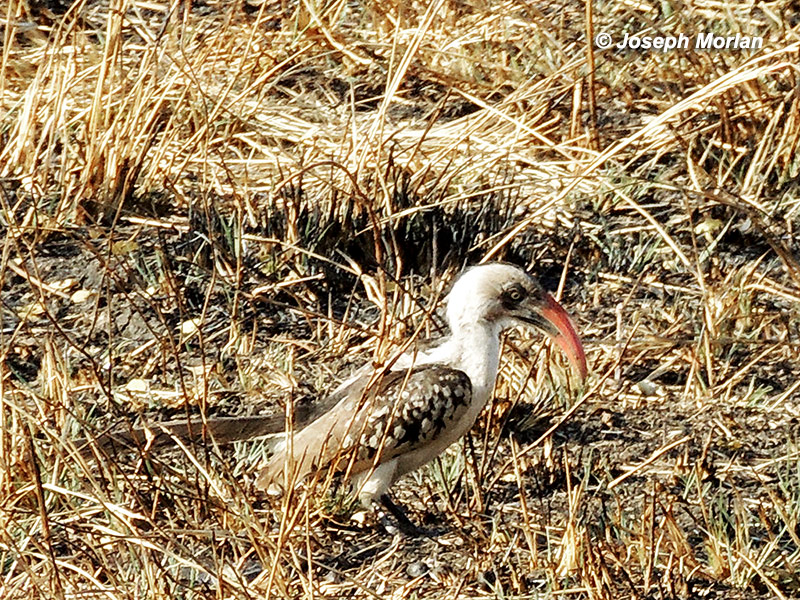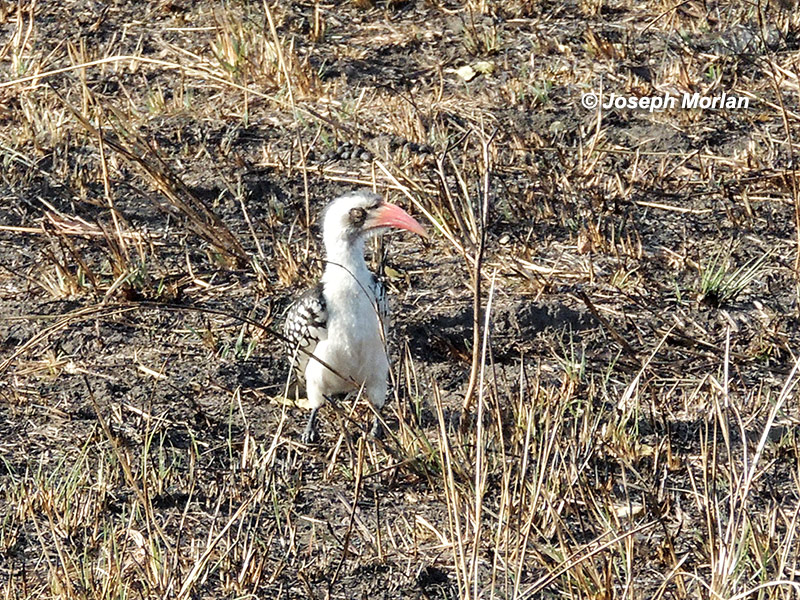

Foraging in a recent burn. The former Red-billed Hornbill (Tockus erythrorhynchus) has undergone a five-way
split as follows:
- Northern Red-billed Hornbill (Tockus erythrorhynchus)
- Damara Red-billed Hornbill (Tockus damarensis)
- Southern Red-billed Hornbill (Tockus rufirostris)
- Tanzanian Red-billed Hornbill (Tockus ruahae) - new taxon
- Western Red-billed Hornbill (Tockus kempi) - new taxon
The key difference between T. ruahae and the others is a combination of large black eye-patch, white
face and contrasting yellow iris as seen here. Most field guides do not treat these taxa at all and their true
ranges are only now being worked out. We saw both Northern and Tanzanian on our visit. East of the Rift Valley
were Northern Red-billed Hornbill
(Tockus erythrorhynchus) which have dark eyes.
The map in Kemp & Delport (2002) shows Northern Red-billed Hornbill ranging well into northern Tanzania but
more recent studies have found that Northern is the expected Red-billed Hornbill east of the Rift Valley while
Tanzanian occurs to the west and south. Useful reference photos of both species and some tentative range maps are
online here and
here.
Reference
Kemp, A.C. and W. Delport. 2002. Comments on the status of subspecies in the red-billed hornbill (Tockus erythrorhynchus)
complex (Aves: Bucerotidae), with the description of a new taxon endemic to Tanzania. Annals of the Transvaal Museum
39: 1-8. [PDF]
Nikon P510 Coolpix Point-and-shoot